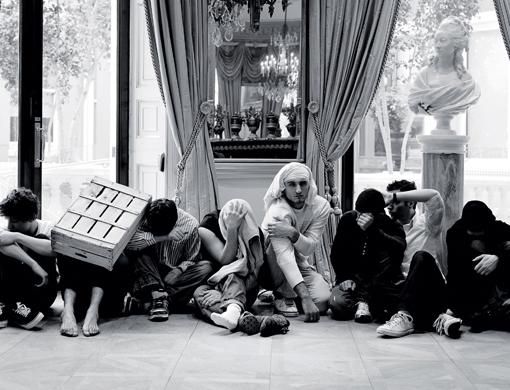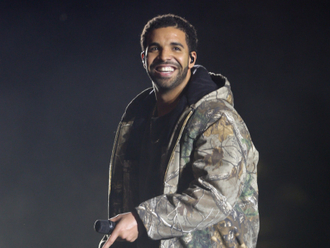An Egyptian soldier guards Iraqi prisoners in the Kuwaiti desert, August 2, 1990''; “Lebanese intelligence agents arrest demonstrators in Beirut, August 9, 2001''; “Fatah loyalists at the Erez Crossing in northern Gaza flee Hamas-run territory for the West Bank, June 2007''; “Palestinian prisoners sit blindfolded on the ground after they were captured by Israeli soldiers, Kerem Shalom, Israel, February 17, 2008''.
We are familiar with the pictures these captions describe. In fact, we are bombarded with news and pictures of war and strife in such a way that the captions immediately conjure up images of soldiers, victims, bodies strewn in the desert and destroyed buildings.
But has the unrelenting media coverage made us so blasé that we do not actually see the pictures despite looking at them constantly? Do we ever think about what is happening and why? Do we empathise with those who are suffering?
Has our apathy allowed some people to fragment society in pursuit of their agenda of greed and power? Is the media truly unbiased and free? How much of what is reported in news should we believe? Should we not look beyond images to get the whole picture?
Reza Aramesh wants to draw attention to these questions with his latest series, Between the Eye and the Object Falls a Shadow.
“I picked this title from the words of one of my favourite writers, William Burroughs,'' says the Iranian artist who has been based in London for two decades.
“Burroughs used these words to describe common sense in a conversation with a friend. I believe common sense will help us perceive the true meaning of what we see,'' says Aramesh, who has used an unusual technique to make viewers stop and take notice of the issues he wants to raise.
To begin with, he chose pictures of war and conflict from newspapers, the internet and other media.
Then he staged re-enactments of the incidents depicted in the pictures using people from the London's streets as actors.
The re-enactments were shot by a film crew and the artworks on display are still photographs from those shoots.
Aramesh's images — he calls them “actions'' — are similar to the news pictures and have the same captions. Yet the pictures are different from what you see in the news.
The soldiers are not in uniform and there are no guns, no bodies, no blindfolds, no blood and gore. The setting is not the desert or the bombed localities of Gaza or Beirut.
Instead, the conflict has been staged in stately English manors with opulent furniture and furnishings. Portraits of the rich and famous who have lived in the manors adorn the walls.
“We are so saturated with images of conflict that the moment we see a gun or blindfold in a picture, we think we know what it is all about and move on. I have deliberately removed those familiar symbols of aggression and oppression from my pictures to change the focus.
"I want viewers to be drawn into the situation, become involved with the image and think about it rather than just see what the media wants them to see,'' Aramesh says.
The artist has cleverly used well-known London estates as settings to convey the strong relationship between finance and warfare.
“After the Second World War many industries went into decline but the arms industry grew rapidly. We also know that often the same people sell arms to both sides in a conflict.
"The settings of my images highlight that war is not about ideology; it is about money, power and greed,'' the artist says.
Aramesh uses untrained actors for his photographs. “I do not want to dramatise the situation because the original pictures are strong enough.
"I explain the image and the situation and tell my actors to just be themselves. As they are ordinary people like those in the pictures, the similarity between their expressions and the originals is uncanny,'' the photographer says.
He is careful to avoid stereotyping and chooses actors of different nationalities. And the images include scenes from the wars in Vietnam and Korea.
The final result is a series of black-and-white photographs that look like still-life paintings and are beautiful and deeply disturbing.
The soldiers may not be in uniform or have guns but you cannot mistake their arrogance or sense of power. The victims may not be blindfolded or bleeding but you can feel their helplessness and frustration.
They draw you in and force you to think about the human tragedies of modern-day conflicts.
After graduating in fine arts from Goldsmith College, London, Aramesh started painting. Eight years ago, he changed his approach to art.
“I saw a striking picture in a newspaper and I realised I did not want to be confined to a studio. I wanted to be involved with people,'' Aramesh says.
Since then he has been working in performance art. “Not being a trained photographer has been an advantage because I do not know the limitations of the camera and experiment freely,'' says the artist who has explored issues such as racism, identity, terrorism and the relationship between the military and power in his earlier works.
The latest series is inspired by Francisco de Goya's Disasters of War, created in the early 1800s.
“Goya's aquatint prints, depicting the horrors of war through compositions of mutilated bodies and body parts, marked a departure from the artistic depiction of war.
"I was inspired by how interested Goya was in the issues of his time and how he was affected by them at a time when artists usually refrained from such expression,'' he says.
“As an artist I am interested in contemporary issues and want my art to speak about them. Although my medium of expression is different, I see this series as an extension of Goya's work. And I have only used black-and-white photographs to indicate that the subject is universal and timeless.
"I am just a commentator on contemporary social issues. I want people to think about the relationship between the documentary and the fictional and how much they should believe what the camera tells them.''
Between the Eye and the Object Falls a Shadow is on at B21 Gallery, Al Quoz, until May 7.












